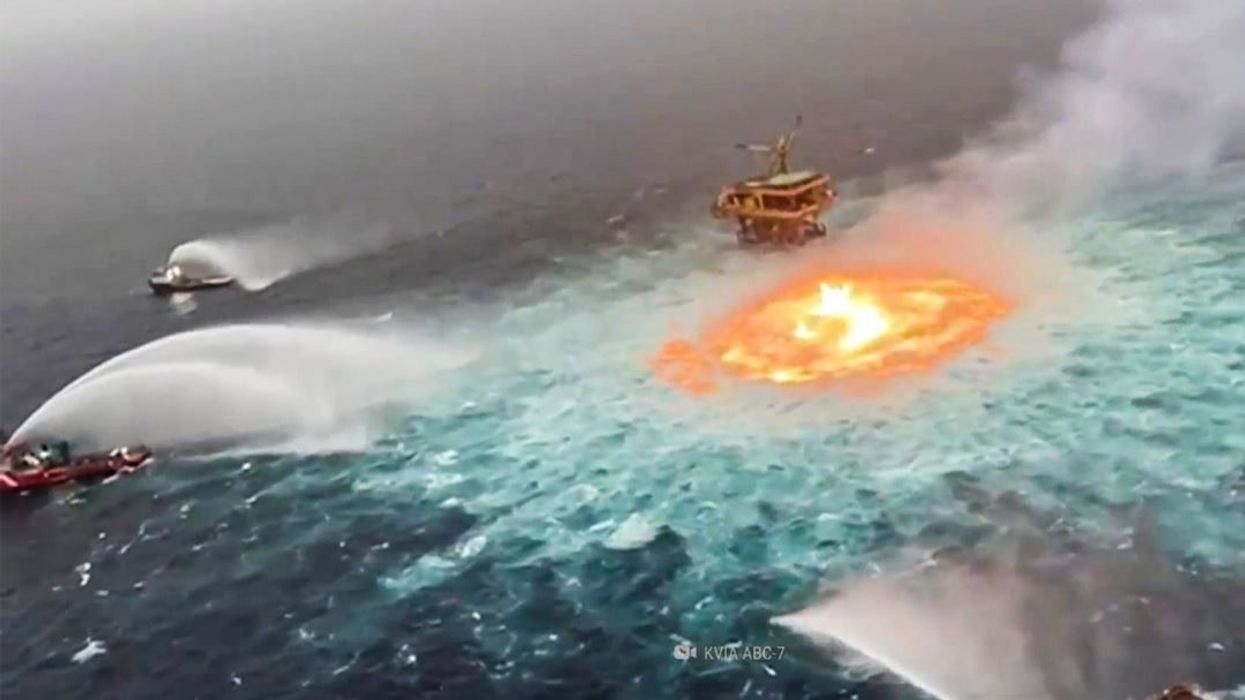Science & Tech
Harriet Brewis
Nov 09, 2025
What If the Oceans Caught Fire?
Underknown / VideoElephant
To the uninitiated, there isn’t much to water.
Sure, the world’s oceans are filled with monsters, marvels and mysteries but, otherwise, they’re just vast, singular expanses of liquid. Right?
Wrong.
Far from being uniform everywhere, ocean water is a patchwork of interlinked layers and masses which mix and split apart thanks to currents, eddies, and changes in temperature or salinity.
Indeed, beneath the surfaces of our great seas, there are waterfalls, rivers and even gigantic blobs, stretching thousands of miles, that somehow manage to evade detection.
Now, scientists have discovered one of these massive blobs in the middle of the Atlantic Ocean; extending from the tip of Brazil to the Gulf of Guinea.
Until the discovery of this water mass – which has been named the Atlantic Equatorial Water – experts had seen waters mixing along the equator in the Pacific and Indian oceans, but never in the Atlantic.
"It seemed controversial that the equatorial water mass is present in the Pacific and Indian oceans but missing in the Atlantic Ocean because the equatorial circulation and mixing in all three oceans have common features," Viktor Zhurbas, a physicist and oceanologist at The Shirshov Institute of Oceanology in Moscow, told Live Science.
"The identified new water mass has allowed us to complete (or at least more accurately describe) the phenomenological pattern of basic water masses of the World Ocean."

As the name suggests, the Atlantic Equatorial Water is formed by the mixing of separate bodies of water by currents along the equator.
To distinguish such masses from the water surrounding them, oceanographers analyse the relationship between temperature and salinity across the ocean — which determines the density of the seawater.
Back in 1942, this charting of temperature-salinity led to the discovery of equatorial waters in the Pacific and Indian oceans, as Live Science notes.
Because they are created by the mixing of waters to the north and south, the Indian and Pacific Equatorial waters share similar temperatures and salinities curving along lines of constant density, which make them easy to distinguish from the surrounding water.
And yet, for years, no such relationship could be spotted in the Atlantic.
However, thanks to data collected by the Argo programme – an international collection of robotic, self-submerging floats which have been installed across Earth’s oceans – the researchers spotted an unnoticed temperature-salinity curve located parallel to the North Atlantic and South Atlantic Central waters.
This was that elusive Atlantic Equatorial Water.
"It was easy to confuse the Atlantic Equatorial Water with the South Atlantic Central Water, and in order to distinguish them it was necessary to have a fairly dense network of vertical temperature and salinity profiles covering the entire Atlantic Ocean," Zhurbas explained in his email to Live Science.
The discovery is significant because it offers experts a better understanding of how oceans mix, which is vital to how they transport heat, oxygen and nutrients around the world.
This article was first published on 22nd November 2023
Sign up for our free Indy100 weekly newsletter
How to join the indy100's free WhatsApp channel
Have your say in our news democracy. Click the upvote icon at the top of the page to help raise this article through the indy100 rankings
Top 100
The Conversation (0)














